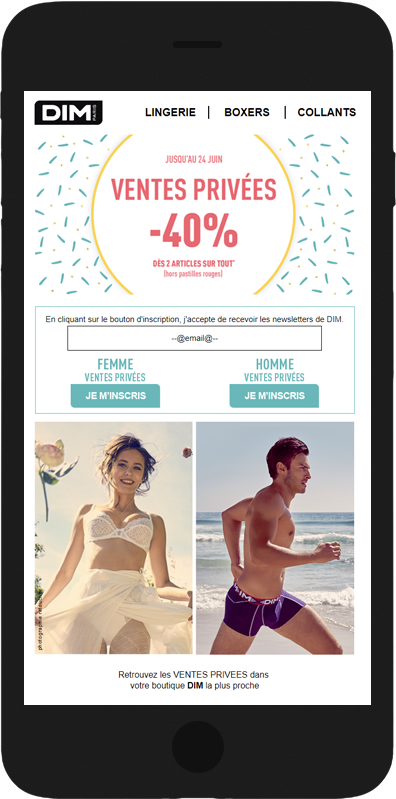In 2018, the GDPR or GDPR (General Data Protection Regulation) has shaken up marketing practices, and email marketing is no exception to this revolution!
Are you in the lead-gathering business? are you managing a prospect database? Whether you work with an agency or run your own e-mail campaigns, you're affected by these new European regulations.
Of course, it's still perfectly legal to send e-mails for the purpose of collecting leads. Here are a few simple, practical tips to ensure your campaigns remain compliant in 2019... Depending on the nature of your PRM campaigns, there are a few key points to bear in mind when sending in a "post GDPR " environment.
GDPR The main principles that apply to acquisition emailing
There are 3 main principles to bear in mind when creating and managing your acquisition email campaigns:
TRANSPARENCY :
In the message delivered to Internet users, in their consent, but also in their right to obtain and manage their information.
DATA INTEGRITY AND CONFIDENTIALITY :
Data processing, encryption and transfer must be fully secure.
LIMITING CONSERVATION :
The data collected may not be kept longer than the purpose for which it is processed.
Apply GDPR to collection emails
Pre-checking a box for future commercial offers when a user creates an account, promising a promotional offer in exchange for signing up to a newsletter, etc... These are all practices that are now totally banned as part of a "clean" emailing campaign. GDPR strictly reaffirms the CNIL's principle that access to an offer cannot be conditional on registration!
Careful email structure and content...

It is essential to create two distinct parts to the email, so as not to force a web user to sign up in order to benefit from the offer:
1. Newsletter registration area
An area reserved exclusively for subscribing to the advertiser's newsletter. Preferably placed at the top of the email, it can also be integrated into a 2nd block, as shown here.
2. Zone relaying the offer or news
It can be one or more zones in the creation of your email. It is in no way linked to newsletter subscription.
Registration
The inscription must be perfectly transparent. Subscription mentions above the email field must be very clear and bigger than before.
" By clicking in the email, I agree to receive newsletters and updates from X".
No-registration access
A link enabling recipients to access the site without registering must appear in the legal notice. For example:
"By clicking on the email, you agree to receive newsletters and exclusive offers from X. If you wish to access the site without registering, please click here. You can unsubscribe from X's exclusive offers and newsletters at any time via the unsubscribe link at the bottom of all email communications."
Welcome email
The collection email must be followed by a welcome email reminding the user that he or she has subscribed to the newsletter, and must include an explicit unsubscribe link.

BEFORE GDPR

AFTER GDPR
Careful handling of collected data
A priori, you haven't waited for GDPR to take this into account, but no more sending databases with data in clear text and by e-mail! Databases must be encapsulated, password-protected and transferred securely (e.g. via SFTP protocol).
Last but not least, GDPR no longer permits the retention of collected information once it has been transmitted for integration into an advertiser's database. All your partners will therefore have to delete the leads they have collected. It will therefore be imperative to record all information transmitted (@, opt-in date, sources, etc.) in your databases, so as to be able to respond to any requests from the CNIL or the Internet user.
GDPR, a force to be reckoned with...
GDPR, although sometimes restrictive in its implementation, imposes good practices in areas that touch on particularly sensitive subjects: personal data. Don't think of GDPR as an obstacle, but rather as a means of optimizing your key performance indicators (KPIs) by reaching out to better-qualified prospects. At Dataventure we see this regulation as progress. From a constraint we draw a strength: that of acquiring prospects who are much more engaged and able to approach our advertisers' brands more willingly.


